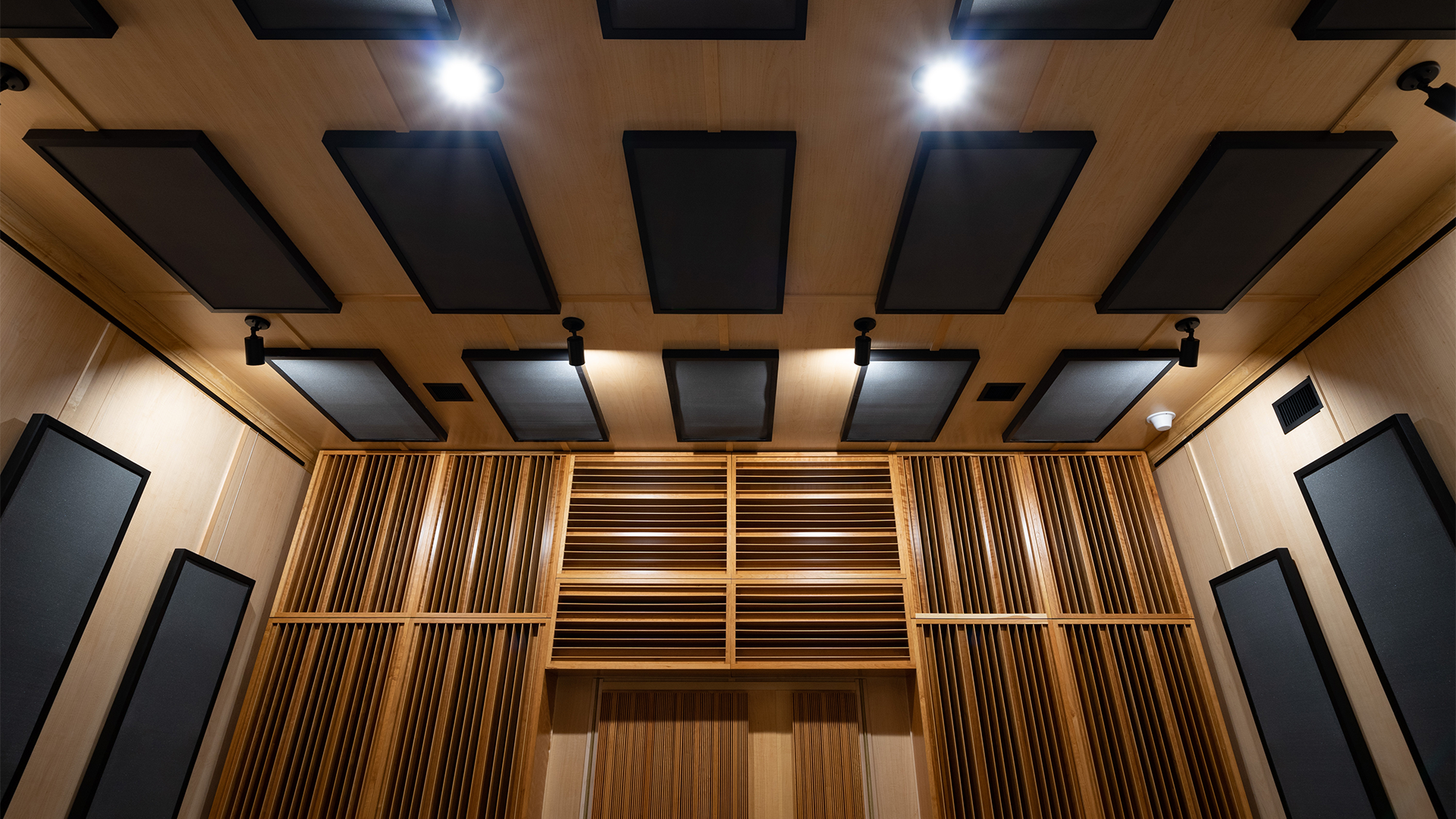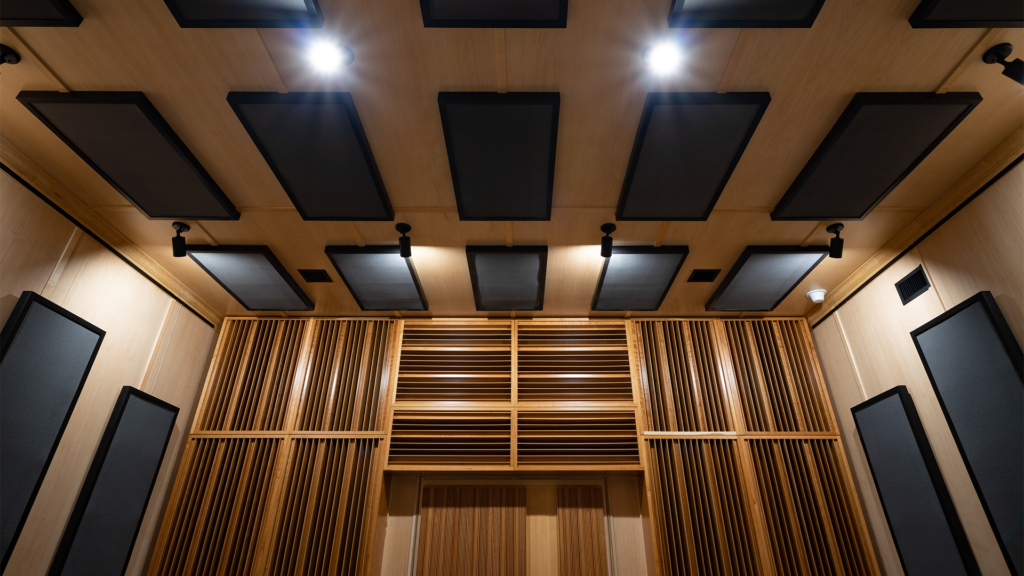
The answer to how many acoustic panels you will need depends on numerous factors. First, what are the issues you are treating with acoustic panels. Are your issues low-frequency? Are they middle and high frequency? Are you trying to lower reverberation times or increase resolution or both?
Acoustic Paneling Done Right
With any acoustic treatment technologies you must match the treatment technology to the frequency and amplitude of your issues. Every wall surface area along with the floor and ceiling dimension produce different frequency and amplitude issues. You must first develop a sonic strategy and decide what you are trying to accomplish overall.The frequency, amplitude, room dimensions with associated volumes, room usage, as well as pressure levels with that usage will all have to be considered. How many acoustic panels do I need will depend on all of these issues along with numerous others. https://en.wikipedia.org/wiki/Acoustic_panel
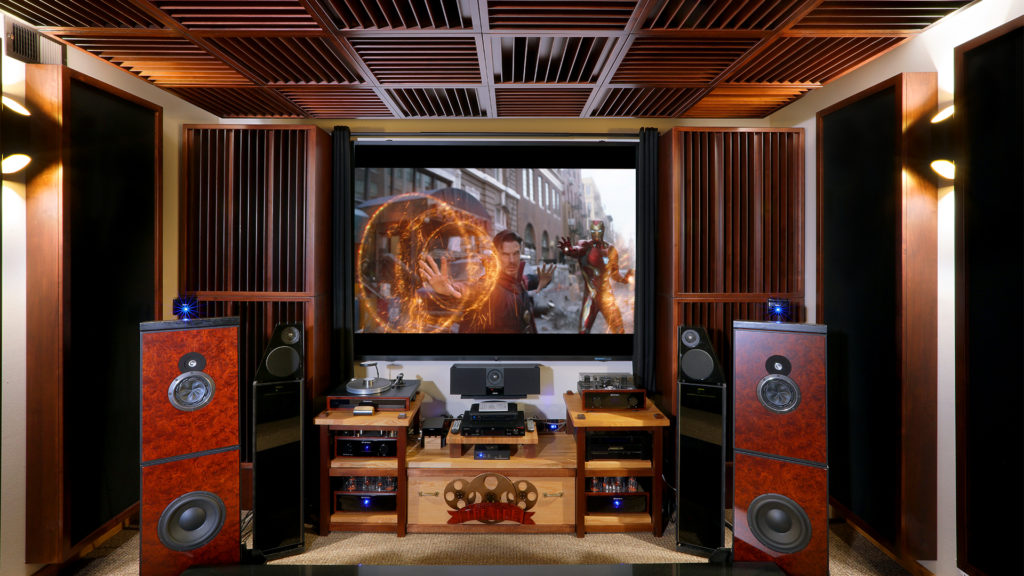
Acoustical Treatment for low-frequency energy
Let’s first focus on lower frequency issues. Low-frequency issues can not be managed by the typical wall hanging panel. Lower frequency energy takes a completely different technology to treat than middle and high frequency energy. The answer to your question on how many acoustic panels do I need for low-frequency management will be completely different from how many acoustic panels do I need for middle and high frequency issues. Low-frequency issues are produced by sound pressure. In order to treat sound pressure issues, we need a technology that is pressure based. Middle and high frequency absorption is managed with air flow across the surface area of the chosen material type. People mix these up all the time. They think one treatment type works for all frequencies. https://www.merriam-webster.com/dictionary/low%20frequency
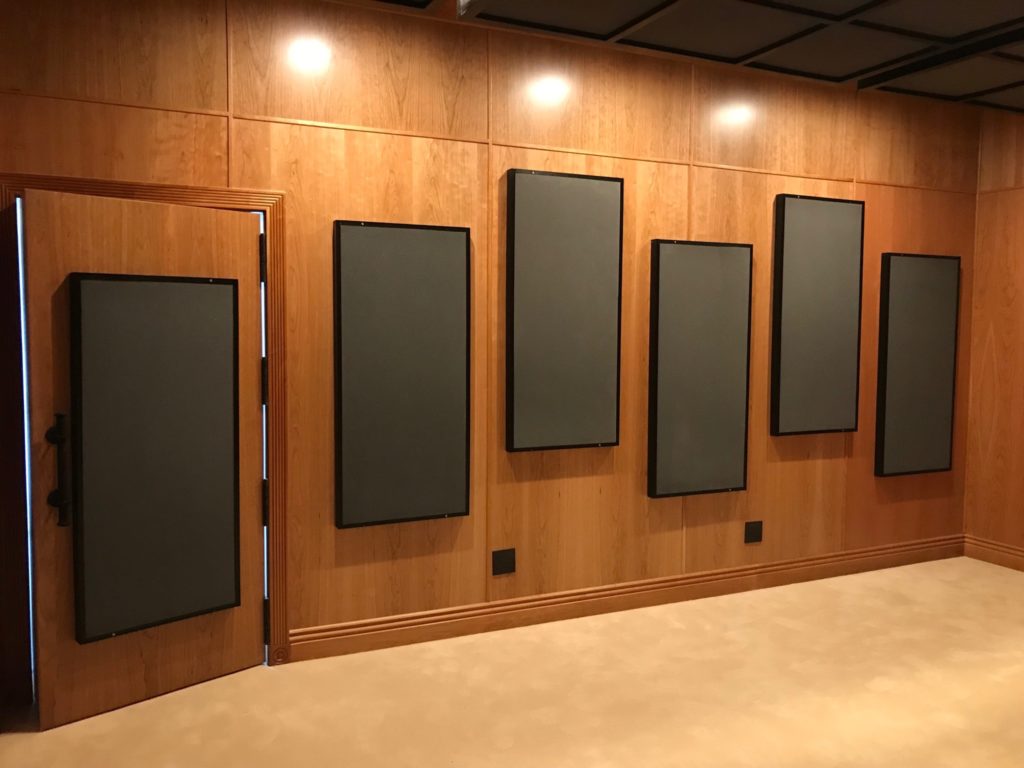
Low-frequency energy is best managed using diaphragmatic absorption. Of the three main types of low-frequency absorption technologies currently in the marketplace, diaphragmatic is pound for pound and square foot for square foot the most powerful. Most diaphragmatic absorbers are 12 – 16″ deep.
https://www.acousticfields.com/product/floor-platform/.
This cabinet depth is required in order to go down to the 30 and 40 hz. low-frequency information in movie soundtracks. Since it is the four walls, along with floor to ceiling dimensions, all of these surface areas must be treated. Don’t get tricked into placing low-frequency absorption in just the corners. The problem is not in the corners, it is across the total wall surface area. Unwanted low-frequency pressure issues are caused by energy that does not fit between two parallel walls, not two parallel corners. https://www.acousticfields.com/how-to-build-a-diaphragmatic-absorber/
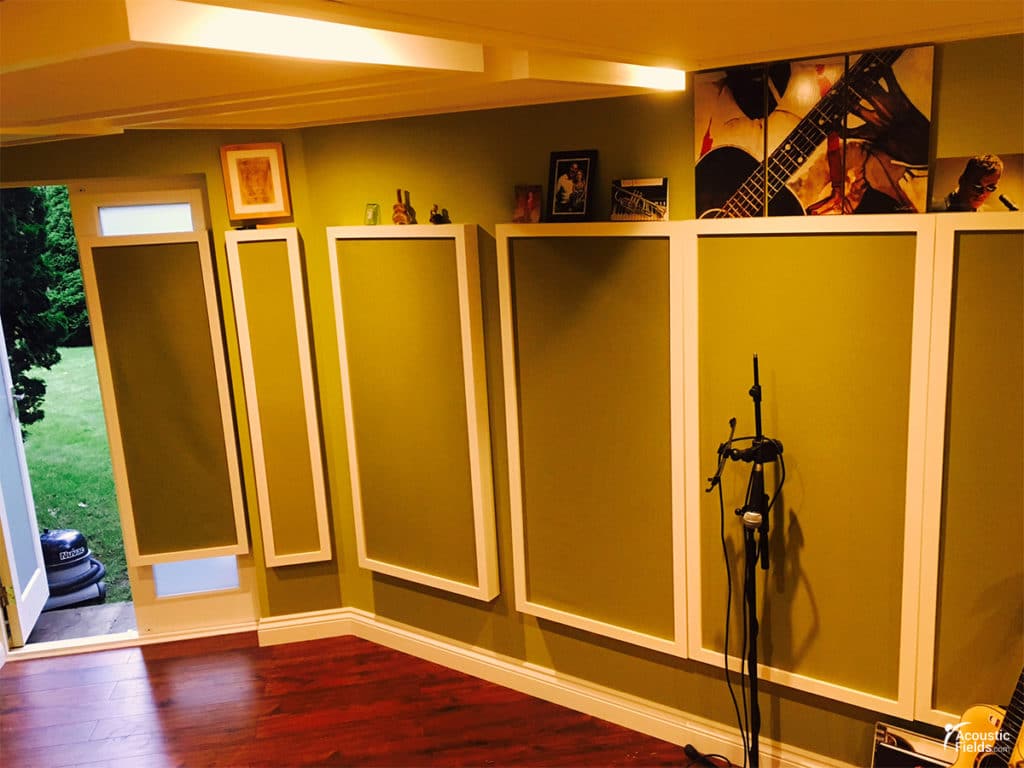
Treat at least 50% of your room walls with sound panels
When asking how many acoustic panels do I need for low-frequency absorption, you must treat at least 50% of each of the four walls along with at least 50% of the ceiling or floor. Diaphragmatic absorbers are heavy. When you are treating floor to ceiling issues for unwanted low-frequency pressure, you can treat the floor or the ceiling. Sometimes you need to treat both. It all depends on the frequency and amplitude created by the floor to ceiling dimensions. Installing panels that weigh hundreds of pounds on the ceiling is not easy. The easier of the two surface areas to treat is the floor. We have designed such a product that is used in home theaters, critical listening two channel rooms along with professional mix rooms. It provides for modules that are 24″ x 48″ x 10″ high that lay next to each other to form a platform that is positioned within the room. https://www.acousticfields.com/product/acda-10-studio/
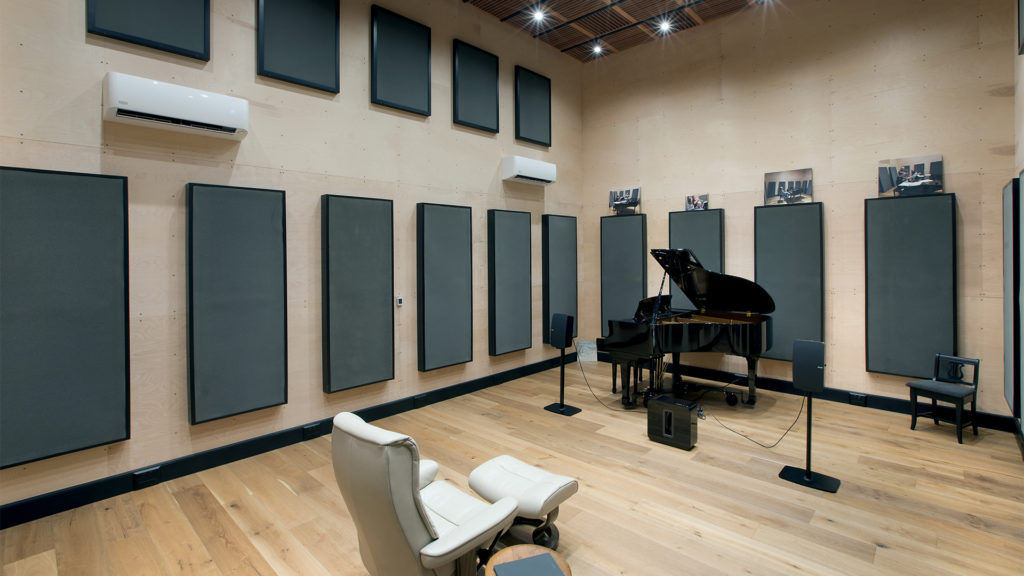
Use diaphragmatic absorbers for frequencies below 100 Hz
When asking how many acoustic panels do I need for middle and high frequency absorption, the ratio is still at a 50% surface area coverage. You must treat at least half of the square footage available on each wall surface area. The most economical way to achieve large surface area coverages is with open celled foam. It is lightweight, economical, predictable in its rates and levels of absorption and can be cut into any shape or size. Panels can be covered with a fabric that has over 50 different colors and textures. Most middle and high frequency foam panels average from 2 – 6″. This is better than half the thickness of diaphragmatic absorbers. However, one must remember that we are absorbing frequencies above 100 hz. using foam technology. The heavy “lifting” is done by the diaphragmatic absorbers.
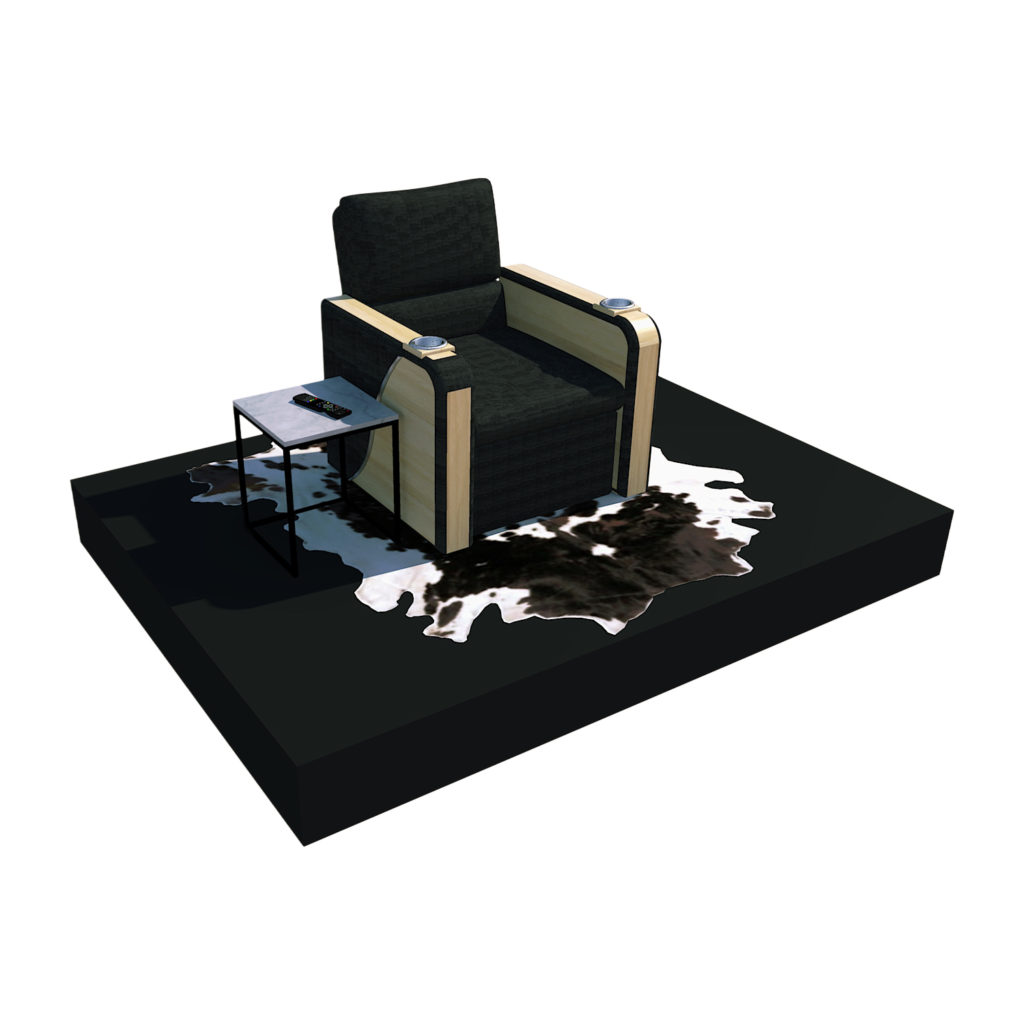
In Summary
Whatever your room usage, you must develop a sonic strategy. Good sounding quality rooms do not happen by chance. Quality room sound with a high degree of resolution must be designed and planned for from the size of the room to the treatment inside the room. Don’t forget about noise transmission. Noise transmission is defined as sound leaving the room and disturbing others along with sound from others coming into the room disturbing you. Noise, as with low frequency and middle and high frequency panels. must use different barrier material types depending on numerous factors. All noise issues must be measured and quantified and qualified so you know what materials to use to stop the noise and just as important how to arrange those materials to specifically manage the noise measurements.


